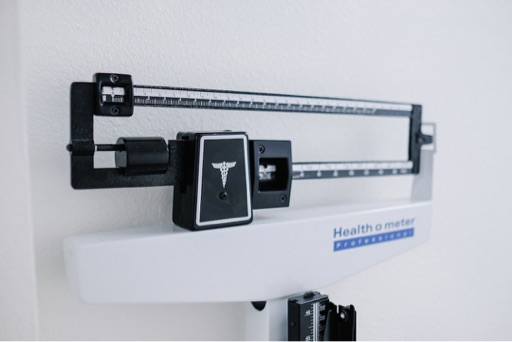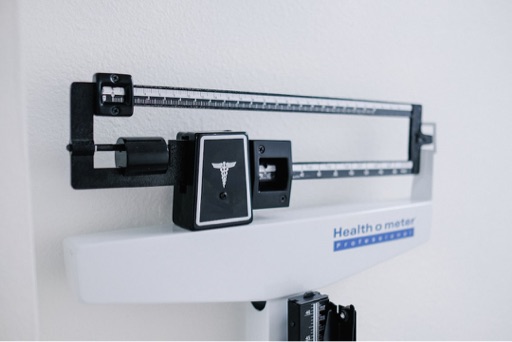Walking is a free and easy way to get more movement into your day. And it can also help power off unwanted pounds. “Walking is a phenomenal form of exercise and is grossly underestimated as a weight loss tool,” says Lauren Borowski, MD, a clinical assistant professor of sports medicine at New York University, and the head physician for the United States Men’s Ski Jumping Team. But how much walking do you really need to lose weight?
As with anything in our amazingly complex bodies, the answer involves multiple factors. So we spoke to several health experts on the topic. Here’s the wisdom we unearthed regarding how much walking is enough to help you reach those weight loss goals.
Walking offers endless health benefits. Just about every health benefit you can dream up is improved by walking for exercise. “Please know that as you increase your steps, you’re doing incredible things for your physical, mental, and emotional health no matter what the scale says,” explains cardiologist David Sabgir, MD, founder of Walk With a Doc.
Of course, weight loss is one of those amazing benefits. Melina Jampolis, MD, podcast host of Practically Healthy by Dr. Melina, reveals, “I have many female patients who lose weight with just walking.” Walking also builds muscle and bone density—both crucial to longevity. She adds, “this may be especially important for those on Ozempic-like drugs who lose muscle and bone.” So how much walking is necessary to get these feel-great benefits?
The origin of the 10,000 steps-a-day benchmark was a marketing scheme developed around the 1964 Tokyo Olympics. At the time, a company began selling a Japanese pedometer with a name that loosely translated to “10,000 steps.” But even if the number is arbitrary, many experts agree that getting 10,000 steps is a worthwhile goal both for your overall health and for weight loss.
In fact, subsequent research has proven it to be a helpful marker. A 2006 study published in the American Journal of Health Promotion showed that sedentary people who began getting more than 9,500 steps daily for 36 weeks experienced notable changes in their body composition: a 2 percent drop in body fat percentage, 5.2 pounds of body fat lost, plus slimmer hips and waist. That said “there is not a magic number for step count,” Dr. Jampolis notes. “It really depends on your starting point.”
Strictly speaking of weight loss, science shows, “to lose a pound, you’d have to walk roughly 70,000 steps,” says Yale-educated integrative physician and weight-loss expert Eric J. Rosenbaum, MD. That is the equivalent of 10,000 daily steps for a week. Can’t hit that goal just yet? There are still big benefits to be had by squeezing in a little more physical activity a few times a week.
Here’s how adding just a few more steps to your day can improve your health (plus how many steps you should shoot for to speed weight loss):
- 6,000 steps daily improves heart health. There are significant heart-health benefits associated with taking daily walks, and they don’t have to add up to 10,000 steps. A meta-analysis of 20,000 older adults who walked between 6,000 and 9,000 steps daily experienced a 50 percent lower risk of cardiovascular disease compared to those walking 2,000 steps daily, according to the journal Circulation.
- 8,200 steps daily lifts your mood and improves sleep. A four-year study published in Nature Medicine tracked 6,000 participants through the NIH’s All of Us program. Researchers found that those who walked 8,200 steps daily—about 4 miles—were less likely to become obese or get diagnosed with conditions including depression, sleep apnea or acid reflux.
- 12,000 steps daily supercharges weight loss. Pushing the envelope: Another study in 2022, published in the journal Medicine & Science in Sports and Exercise, showed that getting an average of 12,000 steps a day was effective for weight loss since it reduced body mass index as well as belly inches.
We know that weight management is often more complicated than a simple mathematical equation, or everyone would easily lose and maintain their weight for life. In reality, fluctuating factors like hormone changes, endocrine glitches, inflammation and metabolic syndrome can shift the way our body responds to changes with food and exercise, altering our goals.
The bottom line on walking to lose weight: any movement is better than no movement. Dr. Jampolis says, “my patients who walk more, lose more! I encourage all of my patients to aim for 10,000 steps a day, as that signifies a more active lifestyle. But that may not be enough for some people.” The most important message she tries to get across to patients: “I’d rather they do something than nothing.” Dr. Borowski agrees, saying, “The goal is to just be more active.”
This content is not a substitute for professional medical advice or diagnosis. Always consult your physician before pursuing any treatment plan.

Source: Woman’s World





